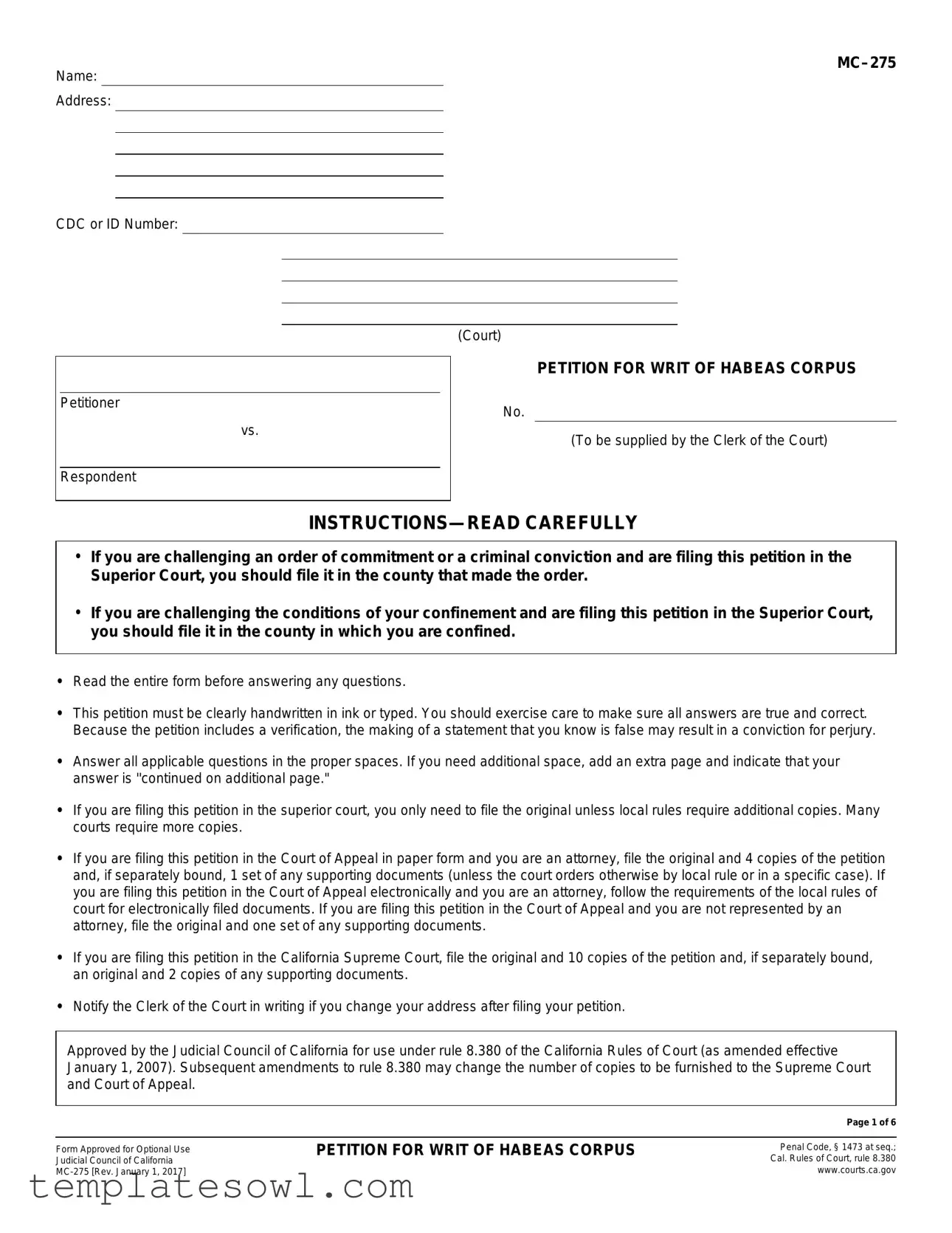What is a Petition for Writ of Habeas Corpus?
A Petition for Writ of Habeas Corpus is a legal document you can file to challenge unlawful detention or imprisonment. This petition requests that a court review the legality of your confinement and potentially grant you relief if your detention is found to be invalid.
Who can file a Petition for Writ of Habeas Corpus?
An individual who is currently in custody can file this petition. This includes those convicted of crimes, those held under civil commitments, and others facing unlawful confinement. If you're directly affected by the situation, you have the right to file.
Where should I file my petition?
If challenging a criminal conviction, file your petition in the Superior Court of the county that made the original order. For challenges related to jail or prison conditions, file it in the county where you are actually confined. Always ensure you’re filing in the correct jurisdiction.
What information do I need to provide?
The petition requires personal information, including your name, address, incarceration details, and the reasons for your custody. You'll also need to detail your case, including the nature of the offense, sentencing information, and any legal representation you received.
How should I complete the petition form?
You must fill out the form clearly and accurately, using either ink or typed text. It's essential to read the entire form before you begin answering questions to understand what information is needed. If you find that you require more space for answers, you can attach additional pages noting that the answers continue there.
What if I made a false statement in my petition?
Filing a petition includes a verification section. If you knowingly make false statements, you may be charged with perjury. Therefore, it’s vital to ensure all information provided is truthful and accurate.
How many copies of the petition do I need to file?
If you’re filing in the Superior Court, generally, you only need to submit the original petition unless local rules dictate otherwise. However, if you are filing in the Court of Appeal or California Supreme Court, additional copies are required, so check the specific rules for that court to ensure compliance.
What are the grounds for relief I can claim?
Grounds for relief can vary and might include issues like an illegal enhancement during sentencing, incompetence of legal counsel, or violations of rights during your trial. Thoroughly describe your claims and support them with relevant facts and evidence.
What if I didn’t appeal my conviction?
If you did not appeal your conviction, you need to explain why you chose not to. The court may consider this a factor, especially if your current petition brings claims that weren't raised in an appeal. It's crucial to be honest and detailed in this explanation.
What is the importance of exhausting administrative remedies?
For petitions concerning conditions of confinement, you must have explored all available administrative remedies before filing. Failing to do so can lead to the denial of your petition, regardless of its merits. Always keep supporting documents that show administrative reviews pursued or state any reasons for not pursuing them.






 Yes
Yes  a. Name of court (''Court of Appeal'' or ''Appellate Division of Superior Court"):
a. Name of court (''Court of Appeal'' or ''Appellate Division of Superior Court"):